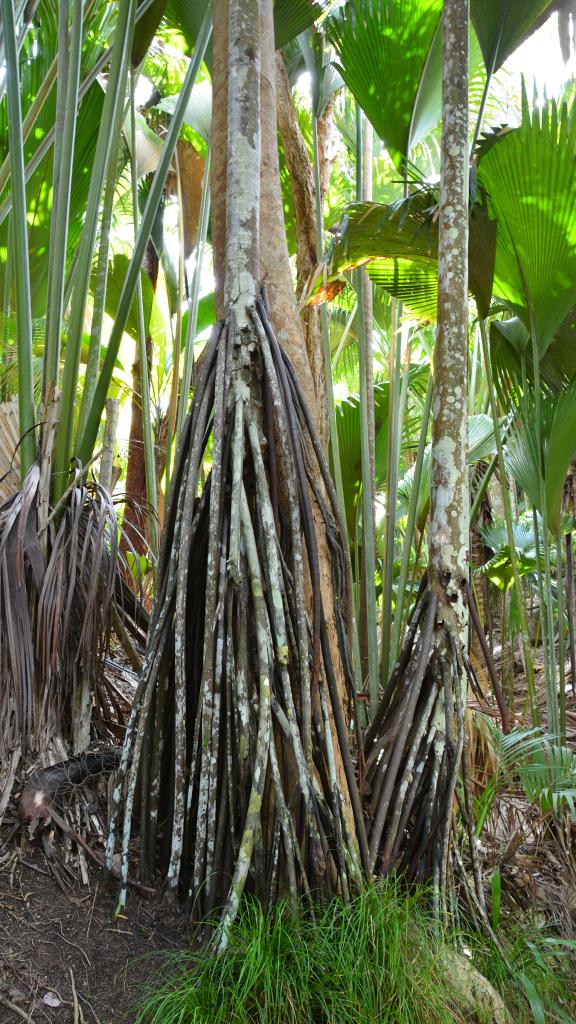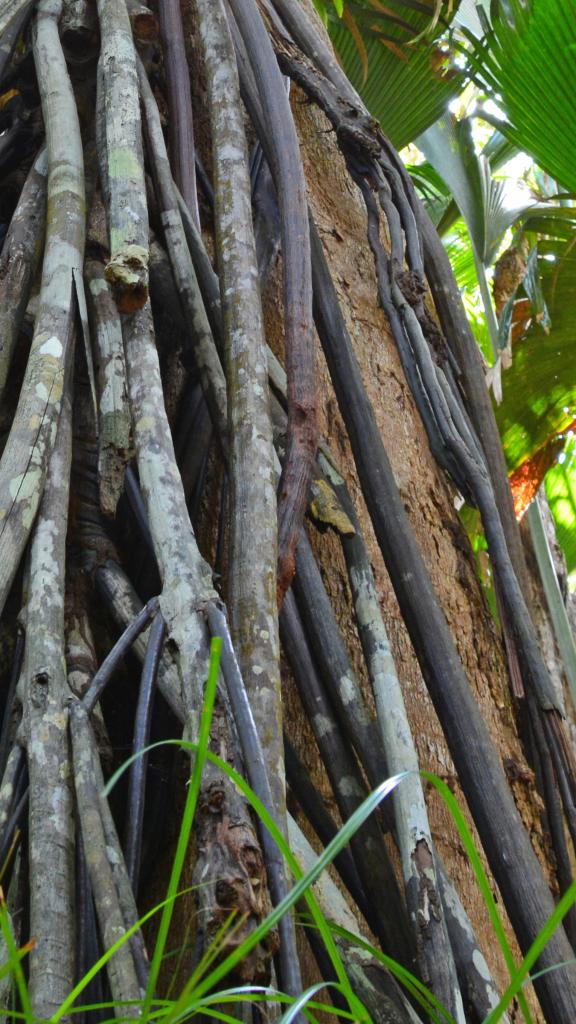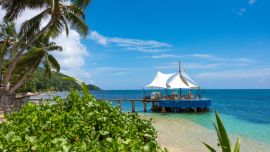Vallée de Mai
The "Heart of Praslin" is home to remnants of the original palm jungles of the Seychelles and has often been described as a "Garden of Eden" thanks to its secluded and mystical nature.
The park was placed under protection as far back as 1966, with over 1,400 trees of the legendary Coco de Mer falling under the protection of the Seychelles Government due to their uniqueness and that of the location.
When the Seychelles were part of the supercontinent Gondwana, many years before splitting into today's existing continents, the area was awash with unique plant and animal diversity that could fortunately be contained by its geographic isolation. Modern conservation measures aim precisely to weed out invasive plant species, as well as those introduced by humans, and to consistently ensure the original character of the valley as home to the Coco de Mer.
It's possible to follow the traces of prehistory in this pristine jungle area, unchanged for millions of years, and find all six of the endemic palm species that can be found here. The Coco de Mer, the largest seed in the world, is particularly admired by visitors, and is the reason for the National Park's world heritage site status, which was recognised in 1983 thanks to the Vallée de Mai's 'excellent exemplification of a characteristic Seychelles palm forest'.
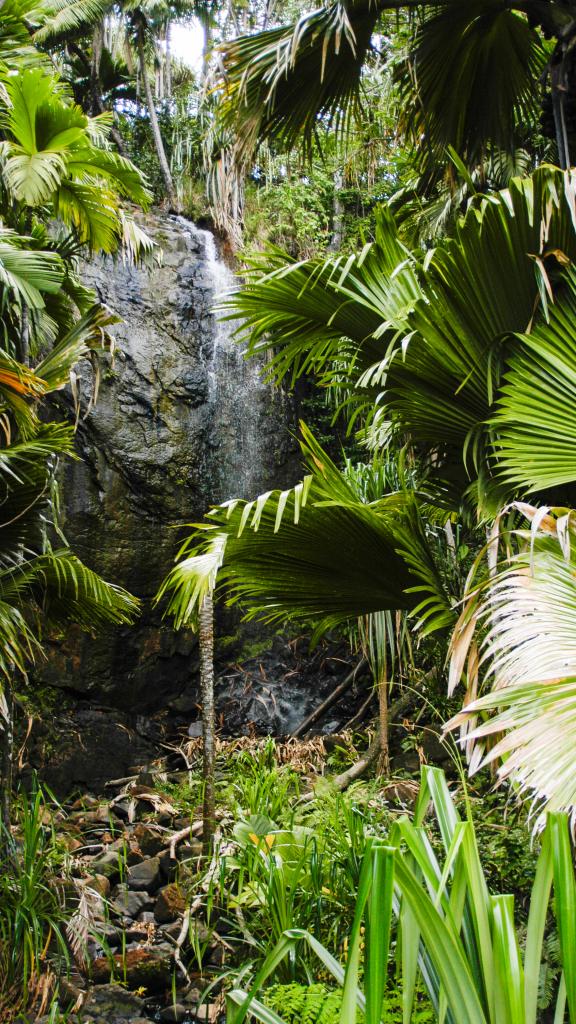
The Coco de Mer only grows naturally on the islands of Praslin and Curieuse. The oldest specimen of the tree is around 300 years old and 27 m high, with a perfectly straight trunk and large, fan-shaped leaves. The female tree produces a heart-shaped fruit of up to 25 kg, the largest and heaviest seeds in the world. It is so large and heavy that it cannot be carried by animals, while if it falls in water, it is both spoiled, and it sinks. Because of its distinct shape, reminiscent of a woman's pelvic region, the seed once enjoyed a reputation as a coveted treasure in former royal courts.
Even today, the Coco de Mer is precious as a souvenir. That said, anyone who wishes to purchase one must bargain hard! Prices generally range between €300 and €600. In terms of the erotic nature of the plant, the male species is equally striking: phallic shapes rise many feet from the leafy crowns, so it is no wonder that many suggest that the male and female plants pair off together at night. A Darmstadt ecologist discovered the truth during his research on the plant's reproductive methods. Many nutrients are transported through the leaves to the foot of the trunk where fallen seeds germinate and grow. This is reminiscent of maternal care, and is thus far unique in the plant world.
However, the Coco de Mer palm is now endangered and on the World Conservation Union's (IUCN) Red List, with numbers falling around 30% in the last 50 years alone. Besides parasites, fires, and logging, the profitable trade of the nuts is largely to blame for this. Officially around 1,000 units are sold each year, but through poaching and theft the real number is larger. In the Asian market, for example, demand (and subsequently prices) are particularly high. The fruit's flesh is prepared and then traded there as an aphrodisiac. As people believed that the fruit is a mythical underwater palm, this greed was an early phenomenon, and stretches back throughout the history of the Seychelles.
In the park is the signposted Glacis Noire Trail, which is also suitable for wheelchair users. This trail guides visitors through the 18-hectare site, leading to a number of interesting plant species. The numerous giant palm leaves affecting the light, in combination with the noise of the leaves and the cracking of the trees ensures a delightful atmosphere that you should take at least two hours to explore.
A commercially-available brochure in the park's main building provides additional notes and information, serving as a guide for the park. This is particularly helpful for opening your eyes and ears to the flora, the geckos, the frogs, snails, and the large-billed bulbul which can all be found in the park.
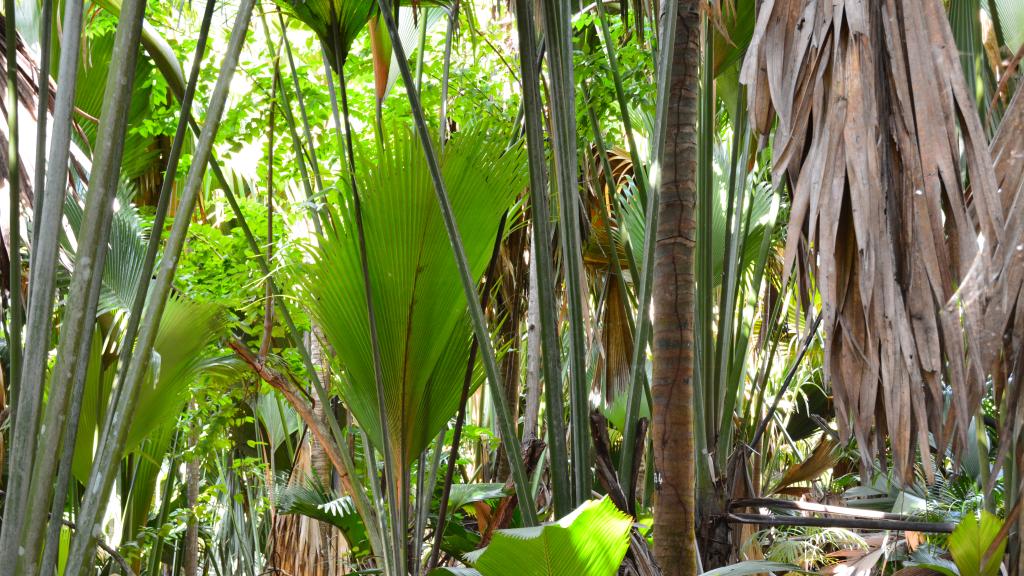
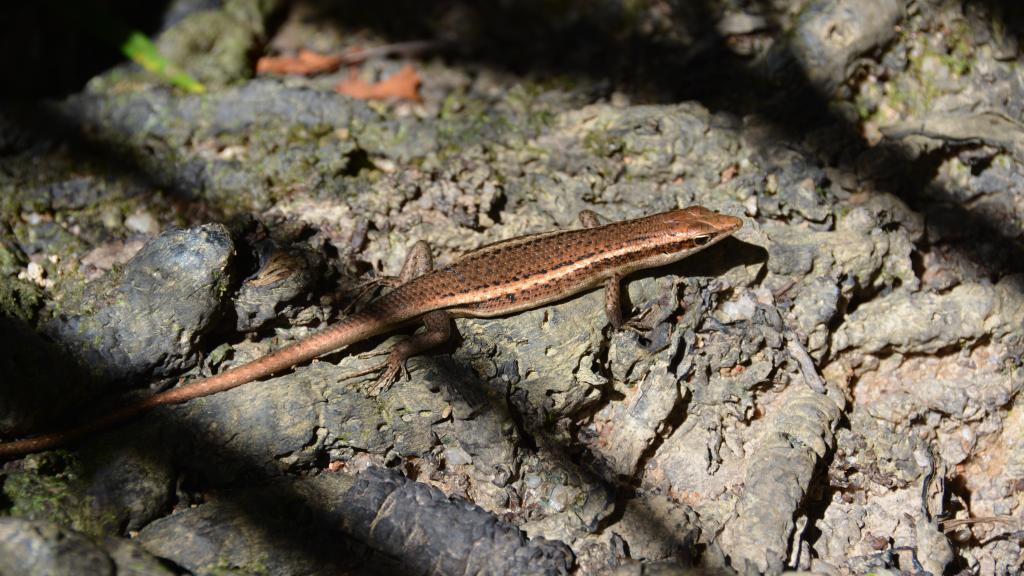
The Vallée de Mai is also home to the rare Black Parrot, of which there are three species in the Seychelles and one more sub-species in Madagascar. The birds are very shy and usually can only be heard. If you wish to take pictures and don't have a high-quality camera, you should use flash to capture your image. At the top of the Glacis Noire it becomes light again, and you can enjoy a stunning 360° view from here. A small café at the park entrance invites you to take a breather, and, of course, there are souvenir shops too.
